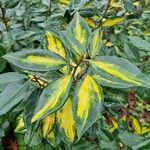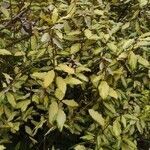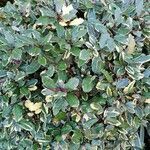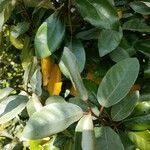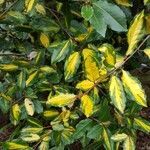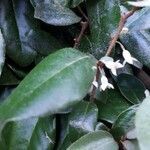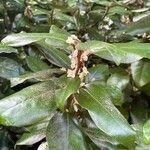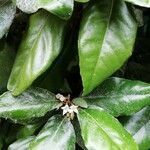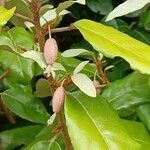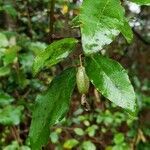Shrubs, evergreen, 3-4 m tall, densely branched. Spines frequent; young branches densely brown scaly. Petiole robust, 5-15 mm, rugose, brown scaly; leaf blade oblong to narrowly so, 5-10 × 1.8-3.5 cm, leathery, abaxially with dense whitish and usually also brown scales, adaxially glabrous and glossy, lateral veins 7-9 per side of midrib, base rounded, margin obsoletely toothed with prominently undulate margins, apex obtuse to bluntly acute. Flowers few, clustered in axils. Pedicel 5-8 mm, brown scaly. Calyx tube funnelform, rather broad, 6-7 mm, abruptly narrowed at base; lobes ovate, ca. 1/2 as long as tube, apex rounded. Drupe oblong, 1.2-1.5 cm, brown scaly. Fl. Sep-Dec, fr. Apr-Jun.
More
It is an evergreen shrub or scrambling climber. It grows 3-4.5 m high and wide. The branches are long, horizontal and prickly. The leaves are oval and glossy. They are dark green above and silvery underneath. The flowers are very small. They are cream and bell-shaped. They have a scent. The fruit are red. They are 1 cm across. Some named varieties occur.
It is a temperate plant. It is frost hardy. It can grow in a range of soils, including clays. It can grow in shade. It it drought tolerant and tolerates coastal exposure. It often grows near the sea. It suits hardiness zones 7-10.
More
Sunny slopes, road sides and thickets in lowlands area, often near the sea; at elevations up to 1,000 metres.
